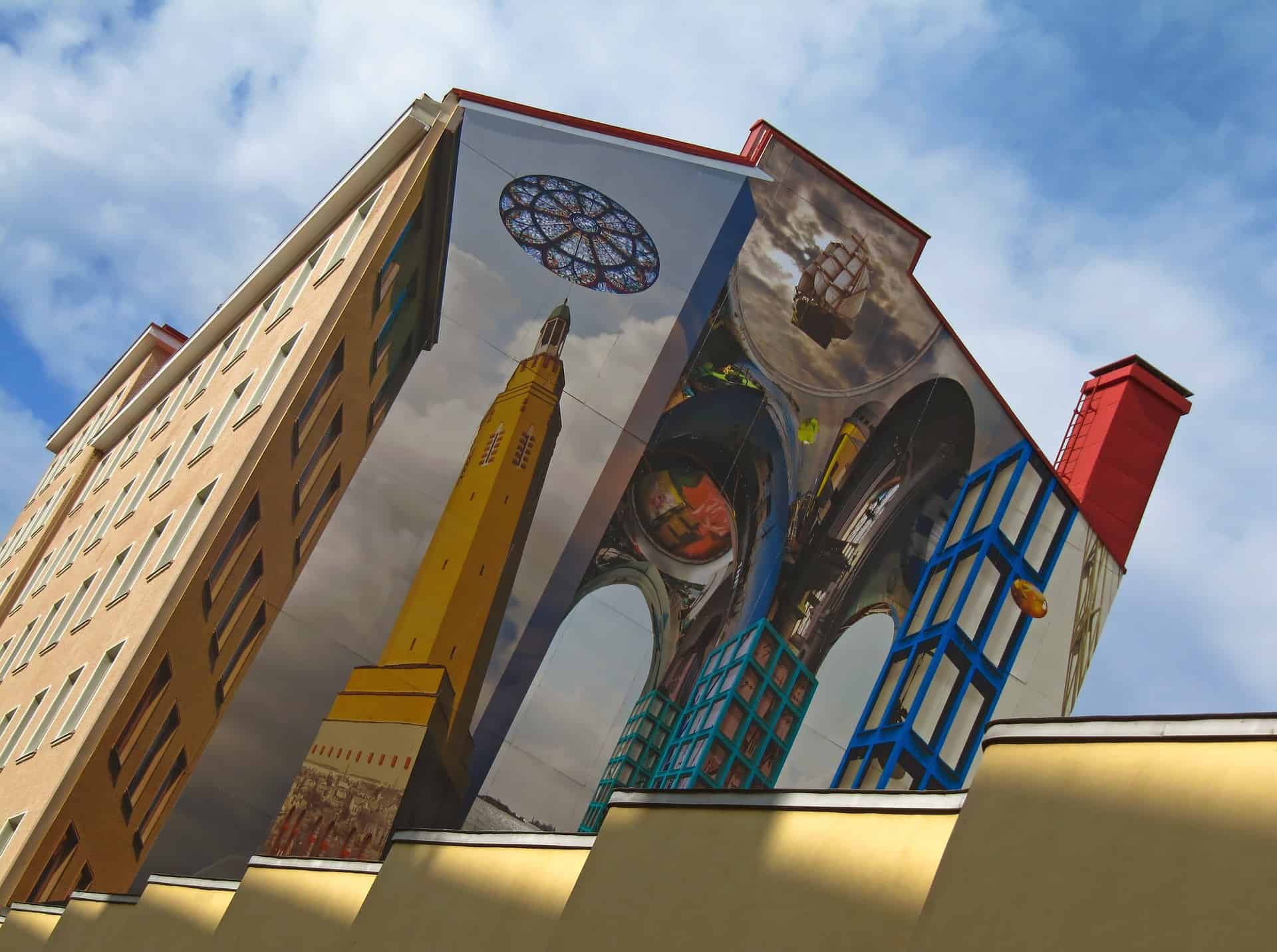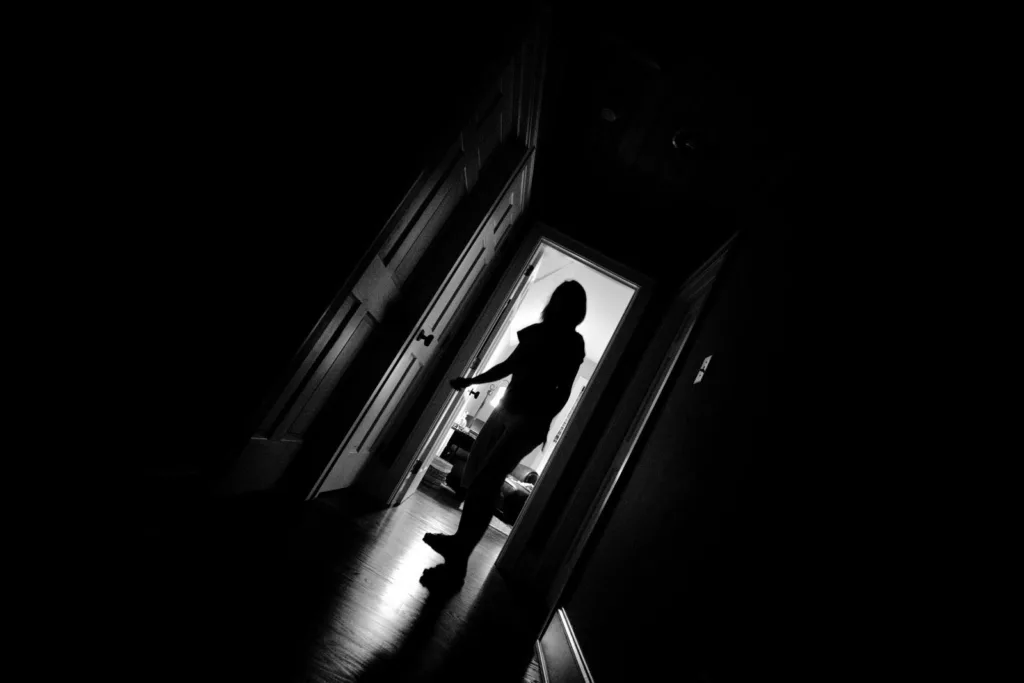Have you ever seen a movie or a TV show where the camera angle was deliberately slanted to one side? That’s known as a canted angle, also called a Dutch tilt or an oblique angle. This type of camera shot adds an element of dramatic tension and can be used to portray unease, disorientation, frantic or desperate action, intoxication, and even madness.
The use of canted angles dates back to the 1920s when German Expressionists began using this technique in their films. The canted frame is achieved by tilting the camera on its x-axis which results in a framed shot at an oblique angle. This technique gives the viewer the feeling that something is off-kilter or askew in the scene they’re watching.
Filmmakers often use canted angles to add an extra dimension of emotion to their scenes. For example, directors may use them to create a sense of paranoia or unease by making the viewer feel unbalanced. Canted angles can also be used for comedic effect – for example when characters are portrayed as beng drunk or dizzy.
Canted angles are not only used in film and television but also in photography and music videos. A photographer might use a Dutch tilt to add drama and interest to a photograph while a music video director might employ it during intense moments as part of their visual storytelling technique.
Overall, canted angles are great tools for filmmakers when it comes to conveying emotion through visuals – whether it’s unease, intensity or humor. As long as it’s used tastefully, this technique can really elevate any kind of media production!
The Meaning of Canted Angle
A canted angle is an angled camera shot used in television and film to create a specific effect. This type of shot is deliberately slanted to one side at an angle, usually to add drama or a sense of unease to a scene. It can be used to portray a range of emotions, such as disorientation, franticness, desperation, intoxication, and even madness. Canted angles are also sometimes referred to as Dutch angles or oblique angles.

The Use of Canted Angle Shots
A cnted angle shot, also known as a Dutch angle, Dutch tilt, or oblique angle, is a camera technique that is used to create a sense of uneasiness, disorientation, or tension in a scene. This can be achieved by tilting the camera slightly off its horizontal X-axis so that the vertical lines in the frame are slightly skewed. By doing so, it creates an unsettling effect and an added sense of visual drama to a scene. Canted angles can also be used to emphasize certain elements of the shot such as objects or characters in the foreground and background. This technique was popularized by German Expressionist filmmakers in the 1920s and has been widely used ever since.
What Is Another Name for a Canted Angle?
A canted angle is also known as a Dutch tilt, Dutch angle, or oblique angle. It is a camera technique that involves tilting the camera on its horizontal axis, which gives the frame an tilted and off-balance look. This type of shot has been used in many iconic films and was popularized by German Expressionism in the 1920s.
The Benefits of a Canted Frame
A canted frame is a filmmaking and photography technique that involves tilting the camera on its axis in order to create a shot at an oblique angle, which gives the impression of a world that is off-kilter or unbalanced. This type of framing is also referred to as a “dutch angle” or “German angle.” It can be used to add tension, suspense, confusion, or any other desired emotion to a scene.
What Does ‘Canted’ Mean?
Canted is an adjective that refers to something that is not positioned vertically or horizontally. It implies that the object is inclined or tilted in some way. For example, if a wall is canted, it means that it is not perfectly vertical or horizontal; instead, it has been angled or sloped in some direction. In architecture, canted walls are often used to create interesting shapes and draw the viewer’s eye.

The Benefits of Using a Canted Corner in Design
A canted corner is an architectural term for a corner that has been cut off at an angle, usually a 45° angle, instead of the original right angle. This type of corner is often seen in modern structures and can be used to add visual interest or to soften the overall look of a building. In addition, canted corners can help reduce wind resistance by allowing air to more easily flow around the building.
Making a Canted Shot
Creating a canted shot involves tilting the camera on its roll axis. You can accomplish this by mounting the camera onto a tripod or oter stable surface and then rotating it to one side so that the frame is composed with vertical lines at an angle to the side of the frame or so that the horizon line of the shot is not parallel with the bottom of the frame. To ensure that your canted shot looks professional, use a leveler to make sure that your camera is tilted at an even angle. Additionally, you should also adjust your focus and lighting to ensure that your subject matter is properly lit and in focus. Finally, if you wish to add additional depth and interest to your shot, consider adding elements such as props, angles, and shadows.
The Origin of the Term ‘Dutch Angle’
The term “Dutch angle” is derived from the German Expressionist film directors of the early 20th century. These directors often used a technique of tilting the camera at an angle to create a sense of uneasiness or tension in their films, which resulted in what is now known as the Dutch angle. This technique was first noticed by French film historian Georges Sadoul in his book Histoire Générale du Cinéma, where he referred to it as an “angle deutsch”. As the term “deutsch” was anglicized over time, it eventually became known as the Dutch angle.
The Benefits of Using Tilt Shots
Tilt shots are used by filmmakers and photographers to add depth, height, and distance to a shot. They can also be used to create dynamic camera movement that adds energy and excitement to a scene. Additionally, tilt shots can be used to reveal inforation that may have been obscured by the angle of the shot. For example, if a character is standing at the edge of a cliff, tilting the camera can reveal more of the landscape behind them, adding context to the scene. Tilt shots are also used to provide visual tension and suspense in horror films when something threatening is off-screen but about to come into view.

Does Beveling Have a Meaning?
Yes, in the context of carpentry or engineering, “cant” can mean bevel. To bevel is to cut a surface or edge at an angle; canting involves creating an angled edge by cutting away a portion of the material. The process is often used when joining two pieces of wood together, such as in making miter joints for framing or cabinet making. Canting can also involve forming an edge with a tool such as a chisel or plane, then sanding and polishing the surface to create a smooth finish.
The Benefits of Using a Canted Wall
A canted wall is a type of architectural feature which consists of an angled wall that cuts off a corner. This angled wall can be used to create a sense of depth or movement within a space, as well as provide visual interest. It can also be used to direct the eye to crtain areas within the space or highlight specific features. Canted walls are often used in combination with other angled walls, such as those created by stepped or sloped floors, to create interesting three-dimensional spaces. Additionally, canted walls are sometimes used to hide structural elements, such as columns and beams, and to provide additional support for large spans.
The Meaning of a Canted Scope
A canted scope is a type of scope that is mounted at an angle on the gun, allowing the shooter to quickly switch between two different sights without having to take their eye off of their target. This allows the shooter to quickly switch between a long-range scope and a close-range red dot sight in order to adjust for different shooting distances. Canted scopes are becoming increasingly popular for tactical shooters who value speed and accuracy.
Understanding Dutch Angles in Film
Dutch angles, also known as Dutch tilts, are a cinematic technique achieved by deliberately tilting the camera off to the side. This is done so that the horizon line is not parallel with the bottom of the frame. The effect of this technique is a sense of psychological uneasiness in the viewer, which can be used to portray a crtain emotion or feeling. It can also be used to convey a sense of disorientation or confusion in a scene. Dutch angles have been employed in films from classic Hollywood cinema to modern blockbusters, and can be seen as an effective way to emphasize certain moments and evoke specific feelings in an audience.
The Effects of a Tilted Frame
A tilted frame is a cinematographic technique in which the camera remains static but is angled up or down, rather than being level. It is achieved by tilting the camera on its vertical axis, creating an effect that mimics the movement of a person raising or lowering their head. Tilted frames can be used to create dramatic tension or to draw attention to certain elements of a scene, such as a particular character or object. They can also be used to emphasize perspective and create visual interest.
Types of Dutch Angle
The Dutch angle is a type of shot in filmmaking and photography that intentionally tilts the camera off-axis to create an unsettling visual effect. It is also known as the Dutch tilt, canted angle, canted camera shot, oblique angle, Batman angle or German angle. The Dutch Angle usually consists of a combination of tilting the camera up or down on its side and/or adjusting the horizon line so that it appears to be slanting across the frame. Depending on the direction in which it’s tilted, this tilted angle can create a sense of unease or tension in a scene by making viewers feel as if they’re loking at something from an unusual perspective. Alternatively, it can give a scene an ethereal quality by creating an abstract composition. Generally speaking, when used in moderation, a Dutch Angle can be effective in drawing attention to specific elements within a frame or emphasizing certain emotions felt by characters within the scene.
Conclusion
In conclusion, the canted angle is an effective camera technique used to create a sense of unease, disorientation, or frantic action in a scene. It is achieved by tilting the camera on its x-axis, resulting in a framed shot at an oblique angle. Popularly known as the Dutch tilt, canted angle, or German angle, the canted angle has been used by filmmakers sine the 1920s to add an extra layer of drama and emotion to their scenes. While it may be overused in some cases, when used judiciously and with a purpose in mind, it can have a powerful impact on viewers.
